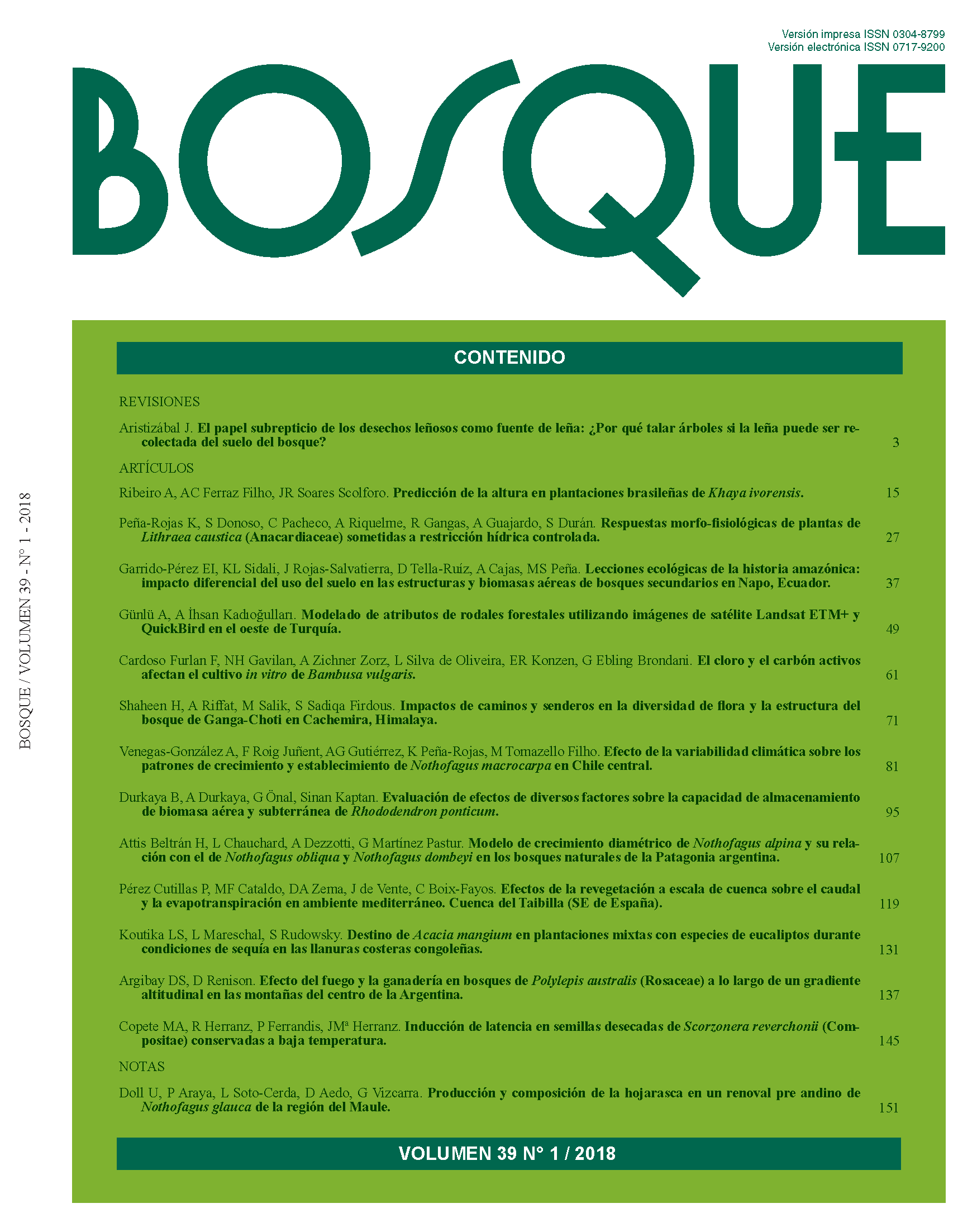Effect of fire and livestock on Polylepis australis (Rosaceae) woodlands along an altitudinal gradient in the mountains of central Argentina
Main Article Content
Abstract
Factors associated with high altitudes, such as the decrease of air temperature, increase of soil humidity and reduced livestock intensity, could affect the response of vegetation to wildfires. The hypothesis that fires and livestock help to explain the altitudinal geographic distribution of Polylepis australis (locally called “tabaquillo”, Rosaceae) woodlands, disposing the species survival and vegetative regeneration to high lands because of low air temperature, high soil humidity and low livestock incidence was tested. Fire and livestock effects on adult trees of P. australis between 1,300 and 2,300 m a.s.l. after a fire of 60,000 ha occurred on September, 2013 in the mountains of central Argentina were recorded. The fire completely burned the crowns of 99.6 % of trees along the whole altitudinal gradient and post-fire survival after one year increased with the altitude from 20 to 50 % (N = 450; P < 0.001). The amount and size of basal resprouts increased, while the evidence of livestock browsing decreased with altitude (N = 74, P < 0.05). It was concluded that the altitudinal distribution of P. australis is influenced by wildfires and livestock, and the reduction of fire incidence could help to expand its distribution to lower altitudes.

